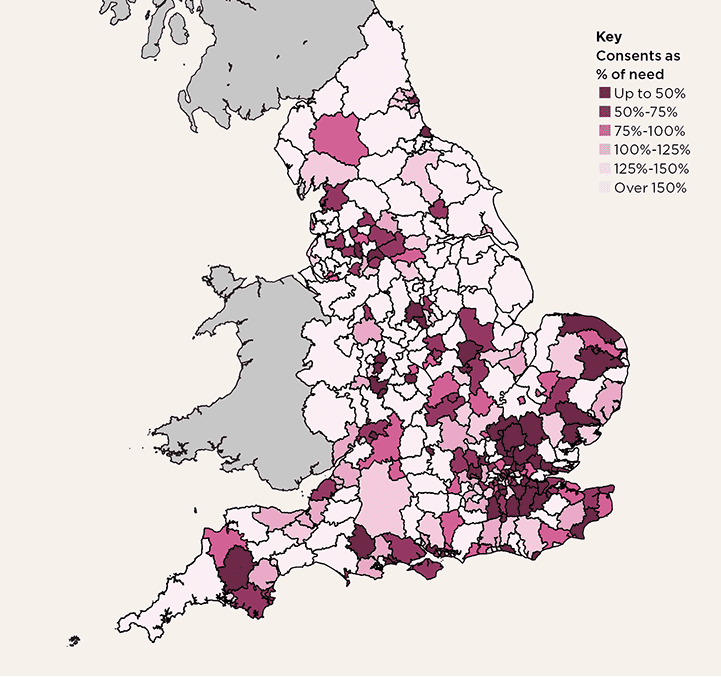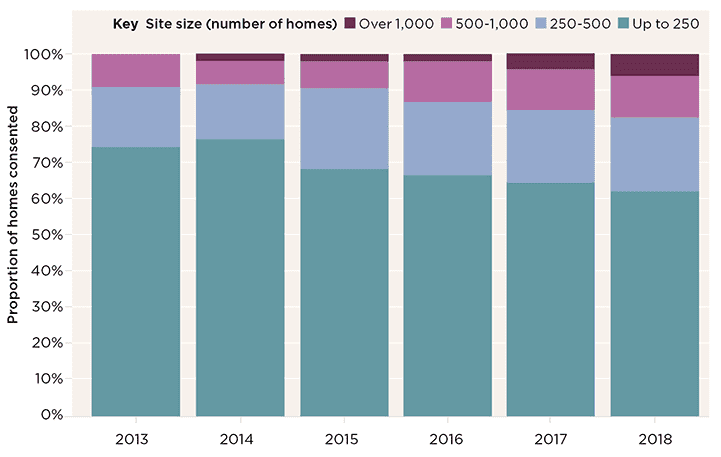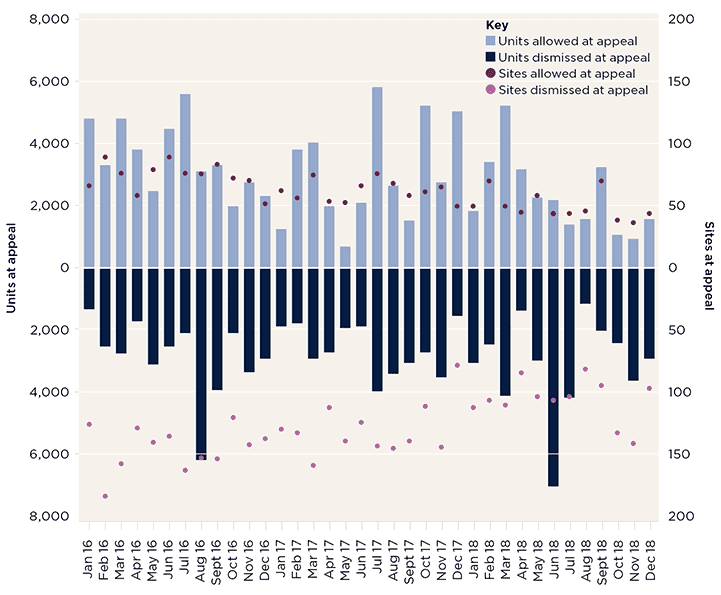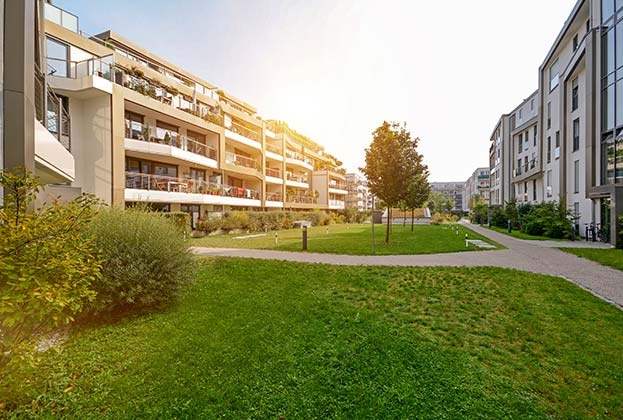Although the number of consents granted in England is falling, the distribution of consents is aligning more closely with where housing is most needed
By spring 2017, the number of full planning consents granted for the year had exceeded the government’s 300,000 homes target. During the following year, consents continued to rise, reaching a peak of 378,959 in the year to March 2018, creating a promising pipeline for future delivery. More recently, the rate of consents has seen a marginal decline, to 369,417 homes in the year to December 2018.
Most of this fall in the number of consents being delivered since the Q1 2018 peak has been due to a reduction of consents in the most affordable areas. These saw a fall of 9% between 2017 and 2018. That means the distribution of consents across England is more closely aligned with MHCLG’s standard methodology for calculating housing need. However, this reduction may simply be due to the oversupply of consents in these lower-demand areas prior to 2018, which means there is already a good pipeline of consented land in these areas.
In 2018, full planning permission was granted for 369,417 homes. This is a 93% increase since the publication of the NPPF in 2012
Savills Research
Falling short
In our 2018 paper, we identified the need for there to be a greater proportion of planning consents delivered in the least affordable parts of the country. Encouragingly, there are signs of increased planning activity in areas where there is the greatest need for new homes. In 2018, full planning permission was granted for more than 80,000 dwellings in the least affordable areas, up from 57,000 in 2017.
However, there are still pockets within the least affordable areas across the country where consents are falling short (see below). The ability of London to deliver a target of 65,000 homes per year is currently the subject of debate in the examination of the London Plan. In 2018, less than half of London boroughs delivered enough planning consents to meet housing need. Seven failed to produce even half the required permissions.
The picture is similar across the country’s most constrained locations, for example, due to Green Belt designations. Oxford, Cambridge and Brighton failed to deliver more than 75% of the number of planning consents to meet need. Local authorities in Devon and Norfolk are also falling short.

Meeting requirements Full consents as a percentage of housing need in 2018
Source: MHCLG, Glenigan
A shift to larger sites
There is a growing trend towards larger sites gaining permission (see below). In 2018, more than 20,000 plots were consented on sites of more than 1,000 homes. This compares with 4,600 in 2016. If there is a greater reliance on larger sites for delivery, there needs to be a greater focus on diversifying product and tenures to ensure the necessary rates of delivery are achieved. This again points to more consents in higher-demand areas.

Larger sites, bigger focus There is a growing trend towards larger sites gaining full permission
Source: Glenigan
Appeal decisions
There is a downward trend in units gaining planning permission through appeal. In the three years to December 2018, 51% of units submitted through appeal were allowed. More recently, this has declined. In the three months to December 2018, just 29% of units submitted through appeal were allowed, continuing a downward trend from mid-2018.
Housing need and supply are key issues for consideration at appeals: a consideration on 35% of appeals allowed since the start of 2016, and accounting for 66% of all units receiving permission via appeal over the same period. But, as more local authorities adopt NPPF-compliant plans, fewer appeals might be submitted on the grounds of a lack of five-year land supply. This would see a diminishing number of units allowed via appeal and a reduced role for the appeal system in generating consents.

Consents There is a downward trend in the number of units being allowed following appeal
Source: Planning Resource
Read the other articles within this publication below
.jpg)

